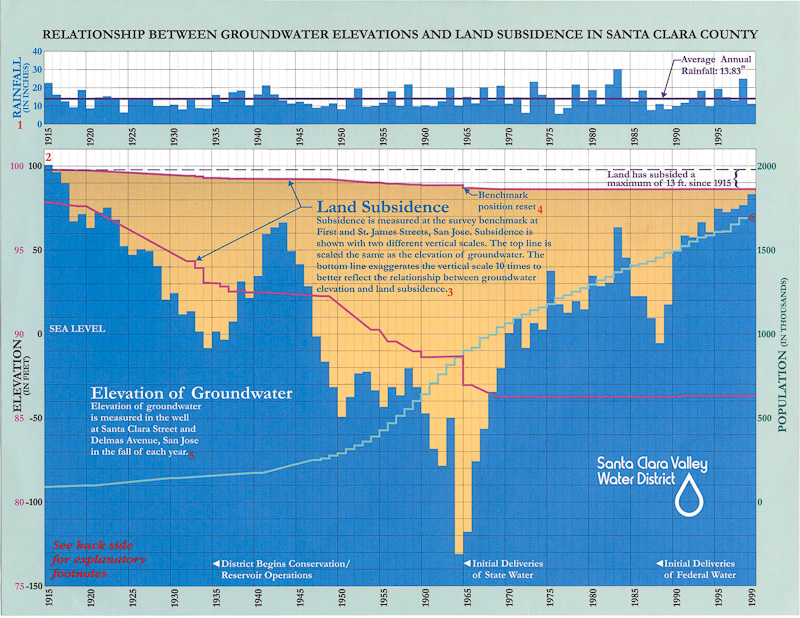Permanent Groundwater Dewatering at Santa Clara University

Probable causes are rooted in the history of the Santa Clara Valley groundwater basin. In the early 1900's, the deep aquifer of the Santa Clara Valley groundwater basin had flowing artesian pressures (i.e., water would flow from a well without pumping). By 1965, intensive groundwater pumping for irrigation, municipal, and industrial uses resulted in a decrease in water levels in the deep aquifer to nearly 200 feet below ground surface. Significant areas of drawdown were near San Jose, Santa Clara, and southern Sunnyvale. Decreased pressure in the deep aquifer also resulted in land-surface subsidence of up to 14 feet by the end of the twentieth century.
After the middle of the century, surface water imports from the State Water Project (South Bay Aqueduct in 1965), and the Federal San Felipe Water Project (Santa Clara Conduit in 1987) reduced demands for groundwater. Agricultural land was converted to commercial and residential uses. Wells were abandoned in favor of surface water supplies. Surplus surface water also began to be used to recharge the deep aquifer. This resulted in an increase in water levels to pre-1960 conditions, to approximately sea level in 1990 and to above ground surface (flowing artesian) today.